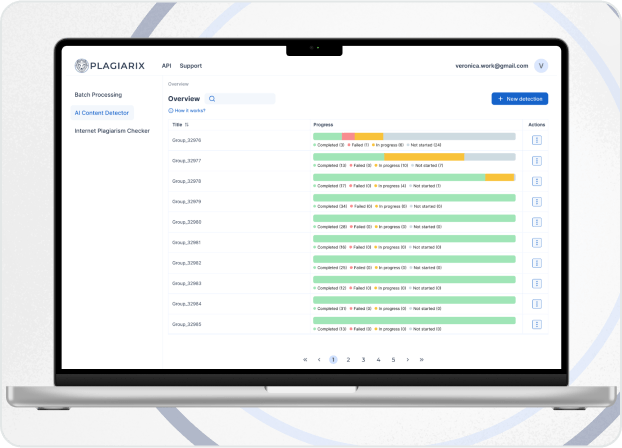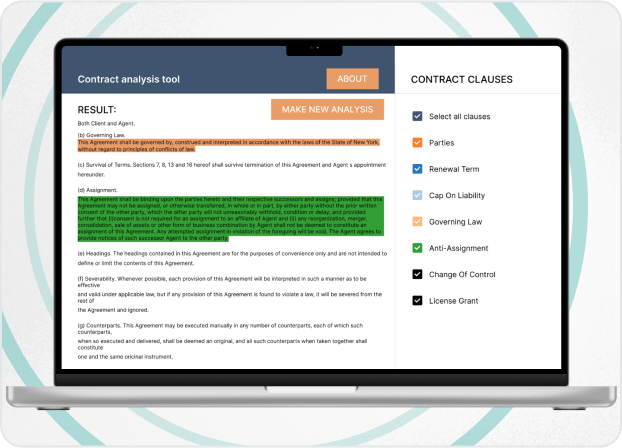
Expert’s Thoughts

"Tech and IT development outsourcing has become a natural and integral part of the modern business environment. Though the importance of outsourcing is undeniable, companies face another problem of choosing the right model that will fulfill their needs and align with company’s resources.
Silk Data prepared the following blogpost on the title of ‘onshore vs nearshore vs offshore’ to explain the key differences between the models and help to make a considered choice."
Yuri Svirid, PhD. — CEO Silk Data
Onshore vs Nearshore vs Offshore: Key Outsourcing Models Overview
IT outsourcing is a big thing these days, as business wishes to get IT or AI solution without extra investments into building or spreading in-house departments.
A comprehensive report made by Business Research Company provides the following facts on IT research and development outsourcing industry.
The current industry annual market growth is 9% in average;

- North America remains a largest outsourcing region, whileAsia-Pacific Asia-Pacific region is considered as the most fast-growing;
- Main industries looking for IT research and development outsourcing are Consumer electronics, Telecommunications, Aerospace, Healthcare, Banking and Finances.
Additionally, Deloitte report of 2024 states that about 80% of world business executives intend to carry on investing into outsourcing. 60% of them are focused on outsourced IT solutions.
The above-mentioned facts announce that IT outsourcing now is in close consideration for businesses. However, the problem of finding the best model appeared.
Companies struggle to choose between offshore and nearshore outsourcing, while some consider onshore as the best option.
This blogpost makes many aspects on the topic clear, providing a comprehensive analysis for each model and defining which benefits companies can get for their web, mobile and AI development projects.
Onshore, Offshore and Nearshore Models Eessence
First, it’s necessary to define the meaning and key principles of each model. The key difference lies in the distance between the outsourcing companies and their clients.
Onshore meaning describes the way when both companies are located within one country, though their headquarters can be in different cities and areas. For example, a US-based company from the East Coast can apply to a vendor located in the West Coast or other US parts.
In the scales of the United States this leads to a certain time zones shift, while in smaller countries, like Germany and the Netherlands, there’s no such a problem.
Nearshore format stands for the policy when a hiring company applies to outsourcing provider located abroad, but still close to its home country. For example, Canadian business can apply to US-based outsourcing, or the company from Central Europe asks for Eastern European outsourcing.
The principle here is to have a combination of closer time zones and lower labor rates available.
Finally, the offshore model implies that the outsourcing company is located far from the hiring company home office. For instance, US-based business can apply to specialists from India, South-East Asia or Eastern Europe.
Typically, offshoring implies far lower labor rates than in the home country of a hiring business (sometimes, twice or thrice lower). Such a benefit can cover all the following inconveniences connected with greater time zone shifts or language barriers.
It’s obvious from the very beginning that each model can provide different advantages in different conditions. Through that, Silk Data provides a comparison based on several key criteria.
Nearshore vs Offshore vs Onshore: Outsourcing Models Comparison
Key aspects that every business considers while dealing with outsourcing are its cost efficiency, hiring processes, communication barriers and data security.
We’ll thoroughly consider each of them to provide an objective comparison.

Cost Efficiency
Price is the most vital criterion of choice when dealing with outsourcing. Still the best option is rather difficult to find, as it depends on two main factors.
Factor 1. Outsourcing company location
Top tech countries like the United States, Canada, Switzerland and the United Kingdom have the highest labor rates for developers, while countries like India, Philippines, China, Poland or Romania offer far lower prices.
From that point, onshore or nearshore outsourcing solutions can be far more expensive for the client companies while offshoring provides greater cost efficiency.
Factor 2. Experience of specialists you hire
Senior developers, designers, project managers and business analysists provide high labor rates, no matter their location (though variability still exists). If you seek experienced and narrow-profiled specialists, you’ll have to pay accordingly.
Anyway, offshoring remains preferable, as sometimes senior specialists from North America ask for double rates compared to their Eastern European or East Asian colleagues.
However, there’s a tendency in the modern outsourcing development industry when specialists from Poland, Ukraine, China and India require higher payments compared to their home countries markets. It happens because of their growing expertise and IT industry development all around the world.
Nevertheless, offshoring is the best option when the task comes to cost efficiency, and countries like Ukraine, India, Poland and Brazil offer the lowest labor rates of 15-60$.
| Region | Software engineer | Solution architect | UX/UI designer | Project manager |
|---|---|---|---|---|
| Western Europe | $120-150 | $150-200 | $90-130 | $110-160 |
| Central Europe | $40-55 | $60-80 | $35-50 | $45-65 |
| Eastern Europe | $30-50 | $45-65 | $25-40 | $30-55 |
| Asia | $20-50 | $30-70 | $18-40 | $25-50 |
| North America | $100-150 | $120-200 | $80-120 | $90-140 |
| Latin America | $25-50 | $40-70 | $20-40 | $30-55 |
| Africa | $20-50 | $30-70 | $20-40 | $25-55 |

Hiring Process
Next aspect refers to the speed and convenience of hiring an outsourcing company.
Countries can have certain laws and regulations that may sufficiently influence the hiring processes or provide limitations for offshoring and nearshoring. They may refer to the tax and insurance issues or other policies regarding work with foreign companies.
Furthermore, a large time zones difference may lead to natural delays in project and working processes discussions, judicial resolutions and work stages delivery.
Through that, onshore seems to be the best option for the cases when speed and cooperation convenience are the main priorities.

Communication and Collaboration
When speed of delivery and convenience are critical, the proper communication process is the key.
In that case, offshoring can hardly compete with other models. Large distances imply great time shifts, and some regions may face language barriers while dealing with your business.
An exception here are India and countries of the Eastern Europe which demonstrate high English proficiency among most of the IT specialists.
However, if your language is far less popular than English, applying to onshore or nearshore outsourcing is the best option – you’ll be able to speak your language, certain that your working hours and corporate culture correlates with those of your outsourcing provider.

Security
Though the data security or intellectual property issues seem not so critical, as your vendor accepts all the regulations you provide, the reality is more complicated.
You should keep in mind that your ideas or intellectual properties can be copied just because the country of your vendor has different laws.
To avoid that, businesses should take two key considerations.
First, it’s necessary to thoroughly investigate laws and regulations referring to the above-mentioned issues in the countries you intend to outsource to.
Second, the data security issues affect the model of outsourcing you should choose. For example, a US-based business should hire a US-based outsourcing company so that both should follow the same laws.
The same applies to the businesses located in European Union countries. The EU has passed a number of laws and regulations regarding data and payment security issues (GDPR, PSD2, etc.) among businesses located there. Through that, applying to outsourcing services provider from the EU member country preserves your company from unwilling judicial problems.
In other words, considering data privacy, payment and operational security, it’s better to focus on onshoring and nearshoring solutions.
| Criteria | Onshore | Nearshore | Offshore |
|---|---|---|---|
| Cost efficiency | Provides the highest rates, similar to those of the hiring company | The medium cost rates (20-40% savings), though still high, especially for senior specialists | Provides the lowest labor rates (50-200% savings), though depends on the region |
| Hiring processes | Fast and convenient thanks to the same legal and compliance policies | Moderate with minor legal adjustments | Slow because of the communication and organizational delays |
| Communication issues | No language or cultural barriers | Minimal problems thanks to the close time zones | Faces challenges because of the language barriers and work asynchronization |
| Security | Highest level of data, payment and intellectual property security | Properly aligned legal regulations | High risks because of the cross-border data transfer and different laws |
Onshore: Pros and Cons

Minimal Language and Cultural Barriers
As was mentioned, the fact that you and your outsourcing services provider are in the same country decreases the level of language and cultural problems to a minimum. In a perspective, it leads to quicker and more efficient communication and IT solutions delivery.

High Costs
When you choose to onshore the IT solution, you should understand that the labor rates of outsourcing provider typically align with those of your country IT market. If your business is in a region with high rates for IT specialists, you’ll have to put extra money into outsourcing.

Same Legal Policy
The same location also provides minimum concerns on the issues referring to your business’s data security. Being the residents of the same country, you are to follow the same laws and regulations which will protect data transfer and payment operations security and optimize negotiation processes.

Limited Specialists Market
The market state issue also refers to the topic of specialists' availability. The variety of specialists is limited by the borders of your home country market. Through that, a problem of outsourcing staff shortage occurs, when you can’t find the vendor who can fulfill your unique business needs.

Highest Trust and Reliability
Onshoring allows you to be permanently informed on how the work is going and quickly learn about barriers and problems. Moreover, a supposed close distance between a hiring company and onshore outsourcing provider implies the possibility of private offline meetings, which improves the quality of communication.
Nearshore: Pros and Cons
Right now, about 80% of North America companies are looking for nearshore outsourced IT solutions development . Key reasons are close workday overlap, cultural proximity and high level of English proficiency.
Though nearshoring is considered as an optimal outsourcing solution, it still has its advantages and disadvantages.

Affordable Price
Applying to nearshoring companies can save 20-40% of their budgets compared with onshore outsourcing or in-house hiring and development. The difference becomes more obvious in the regions like European Union, where neighbor countries can have different levels of labor rates (for example, Germany and Poland or Switzerland and Italy).

Legal Barriers
Even close distances can’t prevent nearshore outsourcing from a number of judicial problems. Even neighboring countries can have different laws or limitations regarding payment and cooperation issues, so the work can face natural delays.

Convenient Cooperation
Nearshoring provides minimal difference in time zones and cultural gaps, so communication and collaboration remain convenient, while the client company can get the same work for lower price compared with their home market.

High Costs (Especially for Top Specialists)
Despite lower rates, nearshoring doesn’t provide the whole new level of prices. In many regions (like North America or EU) the difference can be minimal, while senior IT specialists with unique skills can charge the same or even higher rates compared to those of your home country.
Offshore: Pros and Cons
Offshore outsourcing is the most fast-growing segmentum of the global outsourcing market with an annual growth of 12,5% (according to Market.us report).
Additionally, offshoring is about to take 45% of the world outsourcing market by 2028, with North America holding the largest market share of almost 40% with the highest revenue.
However, this outsourcing model also has its pros and cons.

Lowest Labor Rates
Offshoring provides the lowest outsourcing labor rates compared to other models. The difference becomes even greater, comparing the North America region with South-East Asia or Eastern Europe (120-150$ per hour to 20-60$ respectfully). This fact explains the common growth of outsourcing companies in India, Poland, Romania, Ukraine and many others.

High Risks of Work Control and Quality
Long distances and large time zones shifts imply problems and natural delays in the work quality and results delivery. It can be challenging to reach working overlaps between the client company and the vendor. At the same time, lower prices can imply poor quality and excessive time spent on problem solving and solutions delivery.

Access to Wide Market of Specialists
Offshore outsourcing provides wide possibilities for hiring specialists required for your projects. The vast talent pool provided by different regions makes it easy to find specialists with niche skills and expertise.

Privacy and Security Concerns
Different regions can have different policies on dealing with data and intellectual property. Through that, client companies can’t fully trust their vendors on the issues regarding data security.

Sufficient Language and Culture Gaps
Long distances commonly lead to miscommunication problems because of the sufficient language and culture gaps. However, in IT outsourcing, there’s a tendency when specialists demonstrate high level of language proficiency, especially in English, so the language barrier is no longer a problem.
Conclusions
To sum up, outsourcing has become a cornerstone of modern business strategy, offering companies the flexibility to scale operations, reduce costs, and access global talent. However, the choice between onshore, nearshore, and offshore models depends on your priorities—whether it’s cost efficiency, communication ease, security, or speed of execution .
As the global outsourcing market continues to grow, businesses must weigh short-term savings against long-term operational efficiency . By aligning your outsourcing strategy with company goals, budget, and risk tolerance , you can leverage global talent while maintaining control over quality and security.
Our Solutions
We work in various directions, providing a vast range of IT and AI services. Moreover, working on any task, we’re able to provide you with products of different complexity and elaboration, including proof of concept, minimum viable product, or full product development.


























